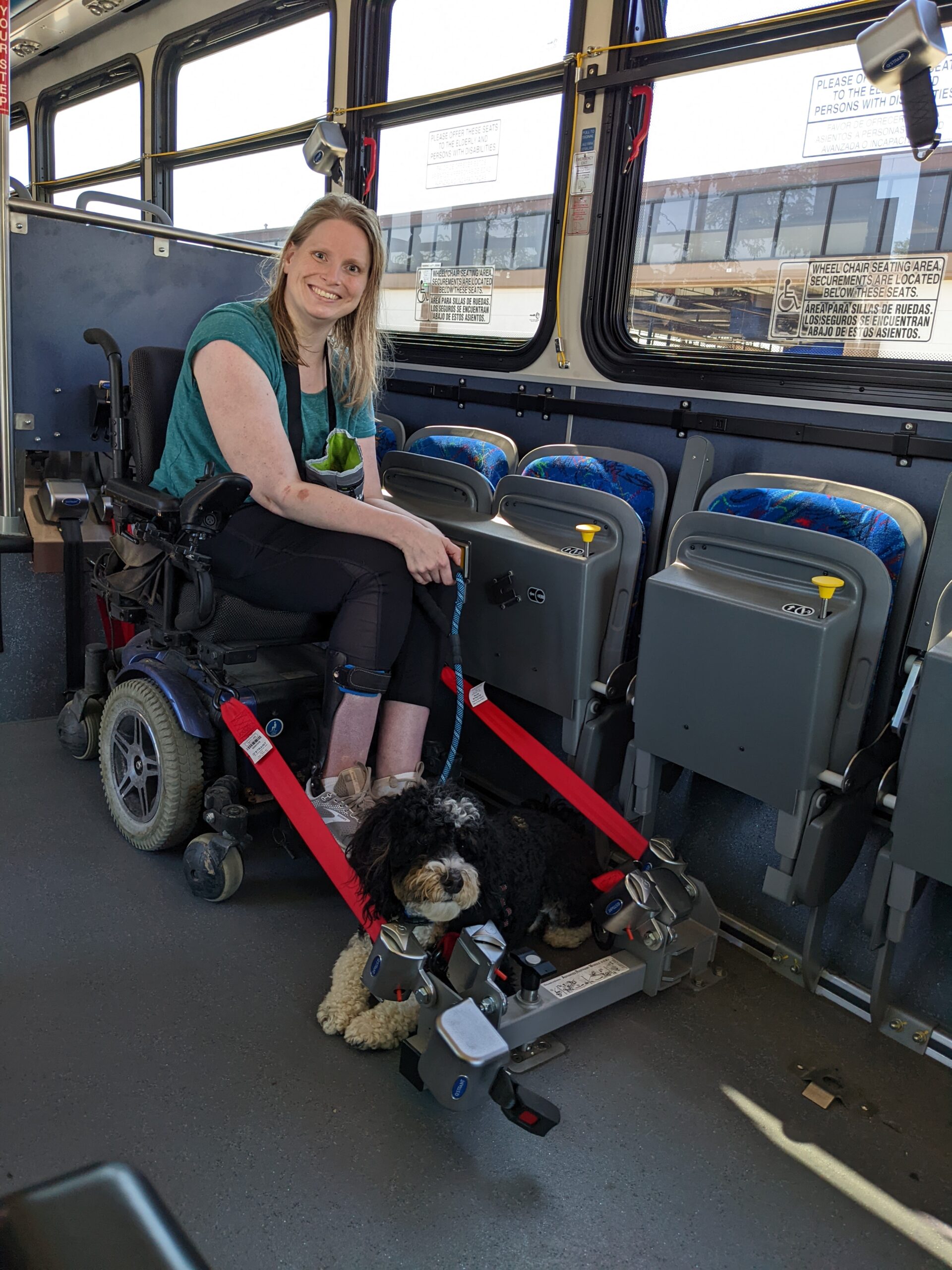About Service Dogs
Service animals in the United States are defined as dogs that are individually trained to do work or perform tasks for people with disabilities. Examples of such work or tasks include guiding people who are blind, alerting people who are deaf, pulling a wheelchair, alerting and protecting a person who is having a seizure, reminding a person with mental illness to take prescribed medications, calming a person with Post Traumatic Stress Disorder (PTSD) during an anxiety attack, or performing other duties. Service animals are working animals, not pets. The work or task a dog has been trained to provide must be directly related to the person’s disability. Dogs whose sole function is to provide comfort or emotional support do not qualify as service animals under the ADA. (for more information see The Americans with Disabilities Act>ADA Requirements: Service Animals)
Other common terms for service dogs are sometimes used by individuals and organizations to help further describe the dog’s job such as Guide Dog, Hearing Dog, Assistance Dog, Medical Response Dog, Diabetic Alert Dog, Seizure Response Dog, and Psychiatric Service Dog. The U.S. federal law only uses the term Service Animal in its definition in the Americans with Disabilities Act (ADA). The important distinction is that the dog has been specially trained to recognize and respond to the individual needs of the person with a disability by performing a job or task.

A disability is defined as any physical or mental condition that substantially limits a major life activity such as walking, seeing, hearing, speaking, breathing, learning, working, performing manual tasks, and caring for oneself. Some disabilities may not be noticeable such as psychiatric and medical conditions.
The Americans with Disabilities Act (ADA) is a U.S. federal law that protects the civil rights of individuals with a disability. The ADA requires businesses to admit persons with disabilities and their service dog onto their premises (without any additional charge or deposit for the dog). Some examples of public accommodations that must allow service animals include restaurants, shopping malls, hospitals, public transportation, taxi cabs, hotels, government buildings, hair salons, dental offices, and grocery stores.
A Service Dog may be excluded from public accommodations if “the animal is out of control and the animal´s handler does not take effective action to control it or the animal is not housebroken”. Allergies and fear of dogs are not valid reasons for denying access or refusing service to people using service animals.
Continue to Service Dog Etiquette —–Service Dog Myths—–Service Dog Access Resources
